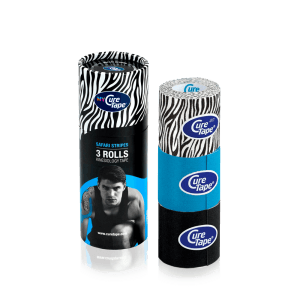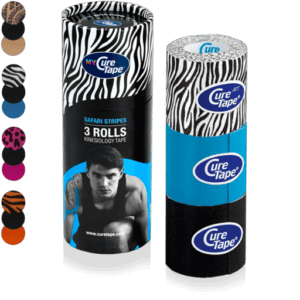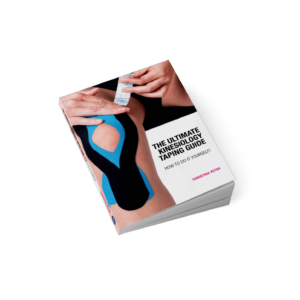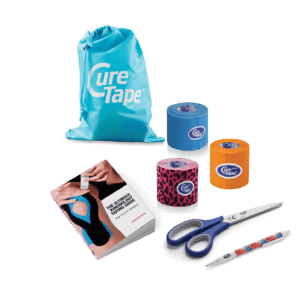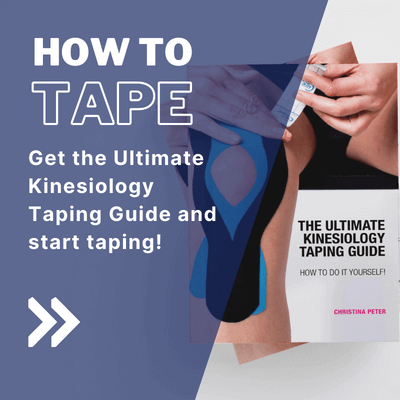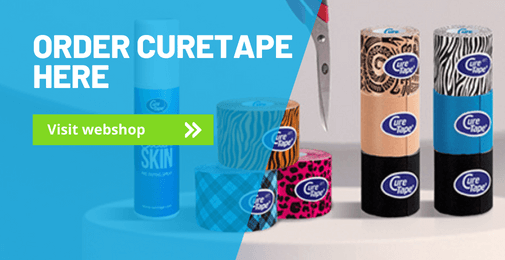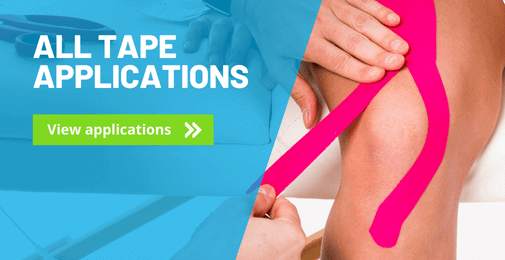Want to know how to easily stabilise your knee yourself using tape? In this page, we are going to explain step-by-step how to do this.
The most common cause of patellar tendon irritation – also known as jumpers knee or Patellar Tendonitis – is overuse of the patellar tendon due to sports. Especially sports involving jumping and stop-and-go movements (e.g. athletics, ball sports, dancing) put heavy strain on the patella. A damaged or ruptured patellar tendon can result from irritation of the place where it attaches (below the knee on the anterior tibia). A stabbing pain occurs with overuse, after prolonged sitting, or when pressure is applied to the tibia. It starts with sporadic, load-dependent pain that becomes more frequent over time and can become chronic when the patellar tendon is too damaged. The tape applications described here are both suitable for relieving the inflamed area and relieving pain. However, if you often have problems in this area, seek advice from a therapist on how best to relieve the knee and strengthen it at the same time. In any case, you should reduce strain and exercise the thigh muscles.
How to tape Patellar Tendonitis
Tips for a good knee taping application
- Is the cause of the complaint or pain clear?
- Check if there any contraindications for not taping.
- Before you start taping, carefully read the instructions.
- Choose a colour of tape, any colour that fits your mood!
- Round of all the edges to prevent peeling.
- Do not stretch the tape at the beginning and the end.
- Rub the tape well for adhesion. Heat activates the adhesive layer.
- Showering or swimming is possible, pat the tape dry after it gets wet. Do not rub it hard.
- It is easier to remove the tape with body or massage oil.

Christina’s advice when taping your knee
In the self-taping instructions, I have chosen taping applications that are easy to apply yourself. In order to make this treatment safe, I give practical tips, which you should take into account before, during and after a tape treatment. They are based on my years of practical experience. If the complaints persist, always consult a therapist or doctor.
Preparation for taping Patellar Tendonitis
Tape
Shape: 1 customised I-Tape.
Number of strips: 1.
Techniek: Ligament technique (maximum/full stretch).
Measuring and cutting the tape
Step 1:
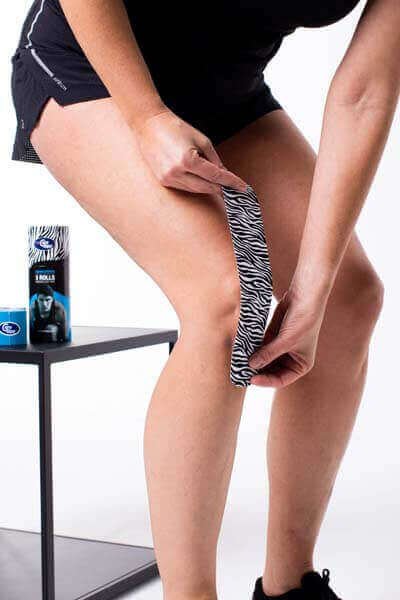
With the knee bent, measure the required tape length from the tibia over the knee to about a hand’s width above the knee.
Applying the tape on the tendon
Step 1:
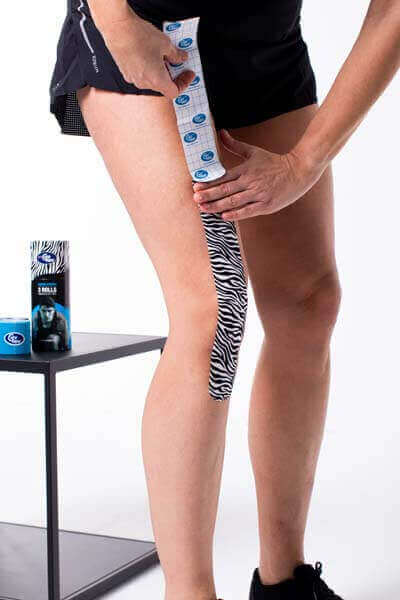
Step 2:
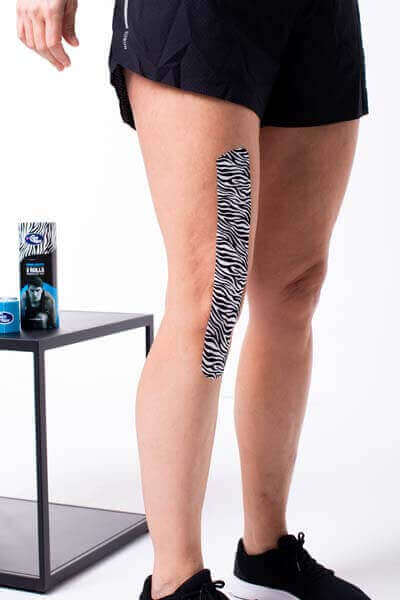
- Place the base approx. 10 cm under the kneecap without stretching.
- Fix the base with one hand while bending the knee only slightly (perform a movement as if standing up from a sitting position).
- Apply the tape with full tension over the patellar tendon and kneecap.
- Then reduce the stretch from the upper edge of the kneecap and slowly stretch the leg. Run the tape over the thigh with a slight stretch.
- Rub the tape firmly in place.
Disclaimer: This tape application relieves the patellar tendon. For this reason, instantly after application, it may feel as if you can no longer completely bend the knee. After a short time you will get used to this situation.
Learn how to tape
- 30 taping instructions for common injuries that taping can help you with
- 176 pages of clear written instructions
- 200 step-by-step instructions accompanied by photo’s, illustrations and scannable video’s through QR codes
What are you waiting for? Order your copy today!
*This book is intended for people who want to tape an injury or complaint themselves. If uncertain about the complaint, consult a physiotherapist.
THYSOL is the manufacturer of the kinesiology tape brand CureTape. As CureTape, we have been training and supplying professionals for almost 25 years. And consumers now know how to find us too! By manufacturing all our tapes in our own factory, we can guarantee the best quality!
Please note that the indicated tape applications and information on our website about the possibilities with kinesiology tape have not yet been scientifically proven. The statements and examples mentioned are based on long-term experiences of patients and trained therapists.
Contraindications not to tape: pregnancy, open wounds, broken bones, unexplained complaints, allergies and skin diseases, use of medication such as blood thinners, thrombosis and fever. Always apply tape in consultation with a specialist.

